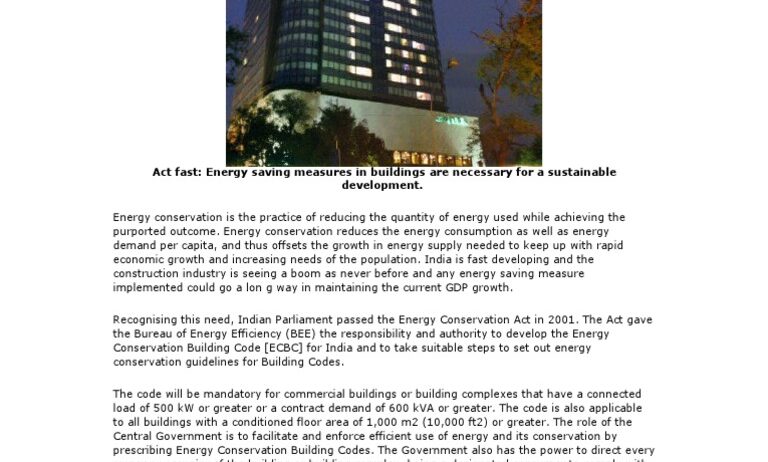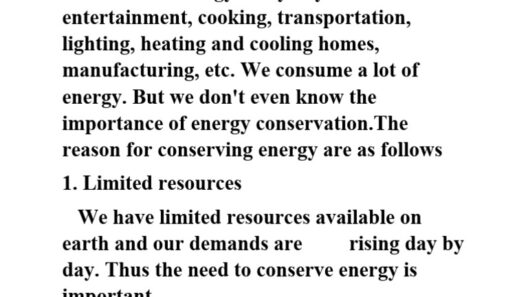As the world evolves, so do the standards and regulations governing energy consumption in buildings. Compliance with energy conservation codes has become increasingly pertinent, especially as we face the challenges posed by climate change. But how do you demonstrate adherence to these energy conservation codes? While this question may seem straightforward, the answer involves a labyrinth of knowledge, documentation, and compliance measures that can sometimes feel overwhelming. Let’s delve into the nuances of building standards and the myriad ways to ensure compliance.
Firstly, it is essential to understand the foundation of energy conservation codes. These regulations, often referred to as energy codes, serve a vital purpose by laying out the minimum energy efficiency requirements for newly constructed buildings and alterations to existing structures. They are designed to streamline energy consumption, reduce operational costs, and contribute to a sustainable future. The implementation of these codes varies by jurisdiction, leading to a medley of local adaptations. Since energy codes are inherently tied to local climate conditions, building types, and available technologies, they tend to be more complex than a one-size-fits-all solution.
To illustrate compliance, one must thoroughly comprehend the regulatory framework in their specific locale. This often entails engaging with the relevant governing bodies to gain insights into unique local mandates. The process typically requires an analysis of state codes, local amendments, and possibly even federal regulations, depending on the scale of the project. Understanding the differences in codes, such as those outlined in the International Energy Conservation Code (IECC) or the ASHRAE standards, can offer a robust foundation for compliance.
Once the requisite codes are understood, the next phase involves assessing the building designs and operational mechanics. One must evaluate the projected energy performance of the building against the mandated standards. This evaluation often requires the implementation of advanced energy modeling software that simulates energy consumption and highlights areas for optimization. By demonstrating that the planned building design meets or exceeds the stipulated performance metrics, you can make a powerful case for compliance.
However, challenges arise when transitioning from theory to practice. For instance, while the energy model may indicate compliance, real-world factors such as construction quality and material performance can influence energy efficiency post-construction. This discrepancy provokes a key question: Are the energy performance claims made during the design phase consistently realized during operation? To address this, a process known as commissioning becomes vital. Commissioning entails systematically verifying and documenting each system’s performance to ensure that they operate according to the defined criteria.
In addition, documentation plays a crucial role in showcasing compliance. Comprehensive records of design calculations, compliance reports, and energy modeling results must be meticulously maintained and submitted to local authorities for review. The failure to produce thorough documentation may invoke skepticism regarding the authenticity of claims made, resulting in delays or penalties. Furthermore, many jurisdictions require a third-party review to bolster confidence in the submitted documentation, reinforcing the imperative to maintain transparent and diligent records throughout the entire project lifecycle.
As buildings near completion, rigorous inspection processes commence. Inspectors evaluate various aspects of the building, from insulation effectiveness to HVAC system efficiency, ensuring they align with the required energy standards. This inspection phase can pose a dual challenge; not only must the project meet the code requirements, but contractors and developers must be well-prepared for potential queries or objections from the inspectors. Thus, effective communication and preparation can greatly facilitate this stage of the compliance process.
Post-occupancy evaluation also serves as a proactive measure to solidify compliance. Engaging in a review after the building’s completion allows for the assessment of energy performance relative to the energy model. This step can identify discrepancies and elucidate areas for improvement or adjustment to enhance energy efficiency. Such evaluations also provide an opportunity to gather user feedback, helping to ensure that the building continues to perform as intended for all its occupants.
While the compliance landscape may appear daunting, numerous resources exist to aid individuals and entities in navigating the complexities of energy codes. Professional organizations and local government agencies often provide training, workshops, and online resources that can assist in understanding compliance requirements. By leveraging these tools, stakeholders can equip themselves with the knowledge necessary to adhere to energy conservation codes effectively.
Ultimately, demonstrating compliance with energy conservation codes transcends mere adherence to regulations. It embodies a commitment to sustainability, innovation, and responsibility. It is a conscious choice to minimize environmental impact and pave the way for future generations. As building standards evolve, the role of the energy-conscious developer remains vital. To encapsulate, while the journey toward compliance involves navigating intricate guidelines and rigorous assessments, the rewards — reduced utility costs, increased occupant comfort, and a smaller carbon footprint — far outweigh the challenges presented. A future founded on sustainable practices awaits those who can conquer the hurdles and demonstrate unwavering commitment to energy efficiency.







